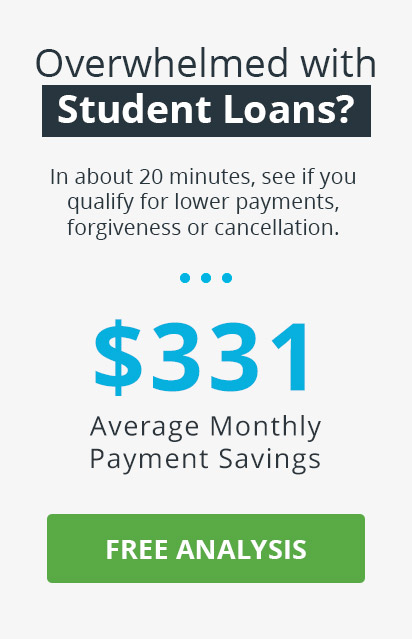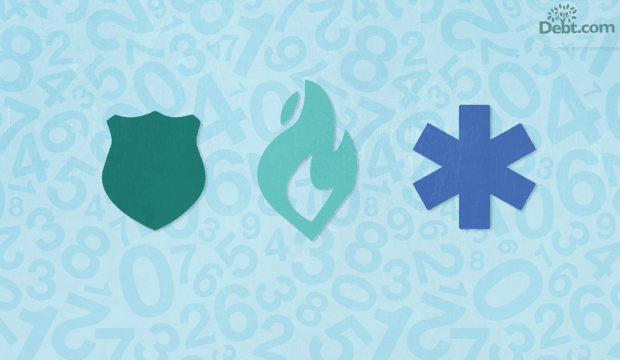
Teacher Loan Forgiveness is a federal program offering student loan forgiveness of up to $17,500 for eligible teachers. Teachers must teach full-time at a low-income school or educational service agency for five consecutive years to qualify for Teachers Loan Forgiveness.
Eligibility for Teacher Loan Forgiveness requires teaching at a low-income school listed in the Teacher Cancellation Low Income (TCLI) Directory. The school must be in a Title I-eligible district with over 30% of students economically disadvantaged. The five-year service must be consecutive and include at least one year after the 1997-1998 academic year. The teaching role must involve direct classroom instruction; administrative positions do not qualify.
Eligible loans for loan forgiveness for teachers include Federal Direct Loans and Federal Stafford Loans (subsidized and unsubsidized). Federal Family Education Loan (FFEL) program loans are eligible if consolidated into a Direct Consolidation Loan. However, PLUS Loans and Perkins Loans are not eligible.
Teacher loan forgiveness involves seven steps. First, verify eligibility by confirming that all qualifications are met. Second, complete the official application form, including all required personal, school, and employment details. Third, seek authorization from the school’s Chief Administrative Officer (CAO) to verify employment status and teaching responsibilities. Fourth, submit the completed application form to the loan servicer. Fifth, maintain communication with the loan servicer to ensure smooth processing. Sixth, address any special circumstances, such as obtaining necessary CAO verifications. Lastly, regularly monitor the application status for updates.
Table of Contents
What is Teacher Loan Forgiveness?
Teacher Loan Forgiveness is a federal program that assists teachers in eligible low-income schools or educational support agencies by forgiving their student loans. Teachers who meet specific criteria, including five consecutive years of full-time teaching at an eligible institution, benefit from the program.
The Teacher Loan Forgiveness program aims to attract and retain teachers, especially in underserved areas. Eligible teachers are eligible to have up to $17,500 of their Direct Subsidized and Unsubsidized Loans and Federal Stafford Loans forgiven.
Teachers must be highly qualified, hold a bachelor’s degree and state certification, and work full-time in a low-income school to qualify. The forgiveness applies only to loans disbursed after October 1, 1998. Teachers must apply for the program after completing their required teaching service.
How does Student Loan Forgiveness for Teachers Work?
Student loan forgiveness for teachers works by providing financial relief in exchange for teaching in qualifying schools or high-need areas.
Public Service Loan Forgiveness (PSLF) allows educators to have their remaining federal Direct Loan balances forgiven after making 120 qualifying payments while working full-time for a qualifying employer, such as a government or nonprofit organization. The program is accessible to most full-time teachers due to its broad eligibility requirements.
The Teacher Loan Forgiveness (TLF) program offers up to $17,500 in forgiveness on Direct or Federal Family Education Loans (FFEL) after completing five consecutive years of teaching at a qualifying low-income school. Special education and secondary mathematics or science teachers are eligible for the maximum amount, while other teachers are eligible to receive up to $5,000.
The Perkins Loan Cancellation program forgives Federal Perkins Loans through incremental cancellations over five years: 15% for the first two years, 20% for the third and fourth years, and 30% for the fifth year. Teachers must work in a low-income school or in shortage subject areas to qualify.
Teachers must explore state-sponsored programs that offer additional benefits for teachers working in high-need areas. Evaluating these options helps determine the most advantageous route for loan forgiveness.
What are the Requirements for Eligibility for Teacher Loan Forgiveness?
The requirements for eligibility for Teacher Loan Forgiveness are specific and involve standards including qualifying employment, duration of service, and the types of loans eligible for forgiveness.
Teacher Loan Forgiveness requires completing five consecutive academic years of full-time teaching at a qualifying low-income school or educational service agency listed in the Teacher Cancellation Low Income (TCLI) Directory. A low-income school is in a Title I-eligible district with over 30% of students economically disadvantaged, ensuring the school needs additional educational resources.
The five years must be consecutive, with at least one year after the 1997 to 1998 academic year. The position must involve direct classroom instruction and be full-time according to state or institutional standards; administrative roles do not qualify.
Eligible loans include Federal Direct Loans and Federal Stafford Loans (subsidized and unsubsidized). Federal Family Education Loan (FFEL) program loans qualify if consolidated into a Direct Consolidation Loan. PLUS Loans and Perkins Loans are not eligible for forgiveness.
A teacher who has completed the required service must apply for forgiveness through their loan servicer, providing certification from the school’s chief administrative officer.
Which Types of Loans are Eligible for Teacher Loan Forgiveness?
Eligible types of loans for Teacher Loan Forgiveness are listed below.
- Direct Subsidized Loans: Direct Subsidized Loans are federal student loans for undergraduate students with financial need. The federal government covers interest during enrollment, grace periods, and deferment. Teachers must have taken out these loans before the end of five years of qualifying teaching service to qualify for Teacher Loan Forgiveness.
- Direct Unsubsidized Loans: Direct Unsubsidized Loans are available to undergraduate and graduate students without financial need requirements. Borrowers must pay interest from the time the loan is disbursed. These loans are eligible for Teacher Loan Forgiveness if the borrower has taught full-time for five consecutive years at a qualifying low-income school, with up to $17,500 in forgiveness.
- Stafford Loans: Stafford Loans, including subsidized and unsubsidized, assist with college expenses. Subsidized Stafford Loans have interest the federal government covers during enrollment and deferment. Unsubsidized Stafford Loans accrue interest throughout the borrowing period. The two types qualify for Teacher Loan Forgiveness if the borrower has completed five consecutive years of full-time teaching at a qualifying low-income institution.
How is Teacher Loan Forgiveness Compared to Student Loan Forgiveness?
Teacher Loan Forgiveness and Student Loan Forgiveness programs share similarities but differ in their eligibility criteria, forgiveness amounts, and application processes.
Teacher Loan Forgiveness is specifically for teachers who work full-time for five consecutive years at a low-income school or educational service agency. It offers up to $17,500 in forgiveness for highly qualified math, science, and special education teachers and up to $5,000 for other teachers. Teachers must have Direct Loans or Federal Family Education Loan (FFEL) Program loans to qualify. The application process requires certification from the school where the teacher worked and is submitted after completing five years of service. The program does not apply to Perkins Loans, except through a separate cancellation process.
Student Loan Forgiveness under the Public Service Loan Forgiveness (PSLF) program is available to employees of government or non-profit organizations, including teachers. Borrowers must make 120 qualifying payments under a qualifying repayment plan while working full-time for a qualifying employer. PSLF forgives the remaining balance on Direct Loans after 120 qualifying payments. Borrowers must submit an Employment Certification Form periodically to confirm their employment eligibility, then submit a final application after making 120 payments. PSLF applies only to Direct Loans, though other federal loans must be consolidated into a Direct Consolidation Loan to qualify.
The primary differences between loan forgiveness for teachers and Student Loan Forgiveness include the service requirements and amounts forgiven. Loan forgiveness for teachers requires five consecutive years of teaching in a low-income school, while PSLF requires ten years (120 payments) of service in a qualifying public service job. Teacher loan forgiveness offers up to $17,500, whereas PSLF forgives the remaining balance. Loan forgiveness for teachers covers Direct and FFEL Program loans (with Perkins Loans through a separate process), while PSLF applies only to Direct Loans, with other loans needing consolidation.
Teacher Loan Forgiveness and Student Loan Forgiveness programs target federal loan borrowers in public service roles, including teachers, and require employment certification. They cater to different service durations and forgiveness scopes, highlighting their distinct eligibility and benefits.
Can a teacher with a Student Loan be Eligible for Teacher Loan Forgiveness?
Yes, a teacher with a student loan can be eligible for Teacher Loan Forgiveness. The program aims to support educators in underprivileged communities by attracting and retaining skilled teachers at schools with staffing challenges. It provides financial relief, reducing the burden on teachers and allowing them to focus more on their roles.
Teacher Loan Forgiveness ensures that experienced teachers stay for at least five years, adding stability to schools. The commitment helps teachers concentrate on teaching rather than repaying their student loans.
Teachers who meet the program’s requirements are included in the list of who qualifies for student loan forgiveness. The program is a reward and incentive for dedicated educators in challenging environments.
How Long Must a Teacher Work to Qualify for Teacher Loan Forgiveness?
A teacher must work five consecutive years to qualify for Teacher Loan Forgiveness. The service must be performed full-time at a low-income school or educational service organization meeting Department of Education requirements. Part-time teaching does not qualify.
One of these five years must be after the 1997 to 1998 school year. Applications submitted before completing the five years are not considered.
Teacher Loan Forgiveness Applications must be submitted after fulfilling the requirements and obtaining certification from the chief administrative officer of the qualifying institution. Teachers who have worked at multiple qualifying schools must submit separate applications. The review and decision process takes two to three months.
What Documentations are Required to Apply for Teacher Loan Forgiveness?
The documentation required to apply for Teacher Loan Forgiveness is listed below.
- Employment Certification Form: Complete the Employment Certification Form, which must be filled out by the applicant and the school principal. The form verifies that the teacher has worked full-time for five consecutive years at a qualifying low-income school, with the CAO affirming eligibility based on employment records.
- Loan Servicer Documentation: Notify the loan servicer about the Teacher Loan Forgiveness application. Ensure all sections of the application are accurately completed before submission. The loan servicer manages the application and provides updates on eligibility.
- Certification by the School Principal: The school principal, serving as the Chief Administrative Officer, must complete Section Five of the application. The section requires the principal to verify employment dates and confirm that the service meets program qualifications, with precise details of service dates provided.
Is Teacher Loan Forgiveness Available for Teachers in All Subject Areas?
No, Teacher Loan Forgiveness is not available for teachers in all subject areas. The program offers loan forgiveness of up to $17,500 for highly qualified teachers in specific subject areas like special education, math, and science. Teachers meeting the >program eligibility criteria and teaching these high-needs subjects receive the maximum amount.
Teachers in other subjects who meet program eligibility requirements, including five years of teaching at low-income schools and holding a Federal Family Education Loan or Direct Loan, qualify for up to $5,000 in loan forgiveness.
Teachers must check with their state’s education department to identify the recognized high-needs subjects, which vary by state.
Can Teacher Loan Forgiveness be Combined with Other Loan Forgiveness Programs?
Yes, Teacher Loan Forgiveness can be combined with other loan forgiveness programs, but with essential stipulations. Service years are not double-counted; for example, the five years qualifying for Teacher Loan Forgiveness do not count toward the Public Service Loan Forgiveness (PSLF) program, which requires 120 qualifying payments over ten years.
Teachers with Perkins and Direct Loans must plan carefully. Consolidating Perkins Loans into Direct Loans makes them eligible for PSLF but disqualifies them from Perkins Cancellation benefits. Keeping the loans separate allows for benefits from the Perkins and Direct Loans.
Borrowers must consult their loan servicer before committing to a loan forgiveness program to maximize benefits and navigate eligibility complexities.
Give us 20 minutes. We’ll give you a personalized plan to reduce your student loans – possibly by hundreds a month.
What are the Steps to Apply for Teacher Loan Forgiveness?
The steps to apply for Teacher Loan Forgiveness are listed below.
- Verify eligibility. Confirm that all qualifications for Teacher Loan Forgiveness are met, including teaching at a low-income school and having the necessary qualifications.
- Complete the application form. Fill out the official Teacher Loan Forgiveness application form, including all required personal details, school information, and employment history.
- Seek authorization from the CAO. Contact the school’s Chief Administrative Officer (CAO) to complete Section Five of the form, verifying employment status and teaching responsibilities.
- Submit the application. Send the completed Teacher Loan Forgiveness application form to the loan servicer using the address provided on their website.
- Maintain communication. Stay in touch with the loan servicer to ensure smooth processing and to keep the account in good standing.
- Address special circumstances if necessary. Complete additional requirements, including obtaining multiple CAO verifications or submitting separate loan applications.
- Monitor processing status. Regularly check the application status and follow up with the loan servicer for updates or additional information.
How does Teacher Loan Forgiveness Affect Other Types of Federal Student Aid?
Teacher Loan Forgiveness affects other types of federal student aid in several ways. Receiving Teacher Loan Forgiveness does not impact eligibility for other federal programs, but important considerations exist.
Teacher Loan Forgiveness and Public Service Loan Forgiveness (PSLF) are separate programs. The five years of service under Teacher Loan Forgiveness do not count toward the 120 qualifying PSLF payments, and service periods must not overlap for credit in Teacher Loan Forgiveness and PSLF.
Teacher Loan Forgiveness does not disqualify participants from Income-Driven Repayment (IDR) Plans. It lowers monthly payments under IDR plans by reducing the outstanding loan balance, as these payments are based on income and the remaining balance.
Receiving Teacher Loan Forgiveness does not affect Federal Grants and Loans for Further Education eligibility. Teachers are still eligible to apply for additional funding through the Free Application for Federal Student Aid (FAFSA), provided they meet the standard requirements.
Teachers are eligible to qualify for Teacher Loan Forgiveness and the Federal Perkins Loan Cancellation program, depending on their loan types. Benefits apply to different loans.
Teacher Loan Forgiveness and other federal student loan forgiveness programs aren’t allowed to be combined for the same service period. Coordinating benefits is essential to avoid duplication and maximize outcomes.
Long-term financial planning is essential even if Teacher Loan Forgiveness does not affect other federal aid. TLF is not taxable until 2025 due to the American Rescue Plan Act, but state tax laws differ. The American Rescue Plan Act (ARP) is a $1.9 trillion COVID-19 relief package signed into law on March 11, 2021, offering economic support to individuals, families, businesses, and governments to help recover from the pandemic.
Are There any Income Restrictions for Teacher Loan Forgiveness Eligibility?
No, there are no income restrictions for Teacher Loan Forgiveness eligibility. The program prioritizes employment and teaching services over income levels. Applicants must be considered “highly qualified” by their state, have a Federal Direct Loan or Federal Family Education Loan (FFEL) program loan, and have taught full-time for five consecutive academic years at a low-income school. The lack of income limits highlights the program’s goal to encourage teaching in high-need, low-income schools rather than targeting teachers based on income.
What Happens if a Teacher does not Complete the Required Five Years of Service?
If a teacher does not complete the required five years of service, consequences arise, including financial penalties, license suspension, and difficulty securing future employment.
Financial penalties> include fines ranging from $500 to $10,000, depending on district policies. These fines aim to deter early resignation and compensate for the cost of replacing the teacher.
Breaching the contract results in a license suspension, which leads to a one-year teaching certificate suspension. The suspension severely impacts future job prospects and the ability to find new employment.
Another consequence is difficulty securing future employment. Teachers who do not meet their service commitments are considered unreliable, complicating efforts to secure new positions or obtain positive references, which hinders career advancement.
State-specific regulations influence the consequences. Some states allow teachers to resign without penalty under certain conditions, including severe illness or spouse relocation. Failure to meet these criteria leads to penalties.
A final consideration is the possibility of legal consequences. Complaints filed by school districts regarding contract abandonment have legal ramifications for the teacher. Understanding and adhering to contract terms avoid legal issues and maintain a favorable forgiveness status.
Does my Nelnet Loan Qualify for Forgiveness?
Yes, Nelnet loans qualify for forgiveness programs. Several forgiveness options are available to Nelnet because it manages federal student loans.
Public Service Loan Forgiveness (PSLF) is available for Nelnet loans. Borrowers who make 120 qualifying payments while working full-time for a qualifying public or nonprofit employer have their remaining loan balance forgiven.
A Nelnet Loan is a federal student loan serviced by Nelnet, which manages billing, payments, and repayment plans for loans issued by the U.S. Department of Education. Nelnet loans are eligible for Teacher Loan Forgiveness, which allows teachers to have up to $17,500 or $5,000 forgiven after meeting specific teaching requirements. Income-driven repayment (IDR) plans offer forgiveness after 20 to 25 years of income-based payments.
Borrowers must be enrolled in qualifying repayment plans and meet all program requirements, including working for eligible employers and making payments.









